Pros
Cons
Introduction
Just to make things more confusing, Kodak has released a second PlayFull camcorder called the Ze2, which is a waterproof model. The two PlayFulls are very different in design and performance, as the waterproof PlayFull is wider and shorter (shaped like a credit card), while the regular PlayFull that we reviewed is taller and skinnier. The waterproof PlayFull also records 720p HD video only (no Full HD like the Ze1), and has an MSRP of just under $100.
Front
{{section_header}}{{section.name}}{{/section_header}}

Back
{{section_header}}{{section.name}}{{/section_header}}

Left
{{section_header}}{{section.name}}{{/section_header}}
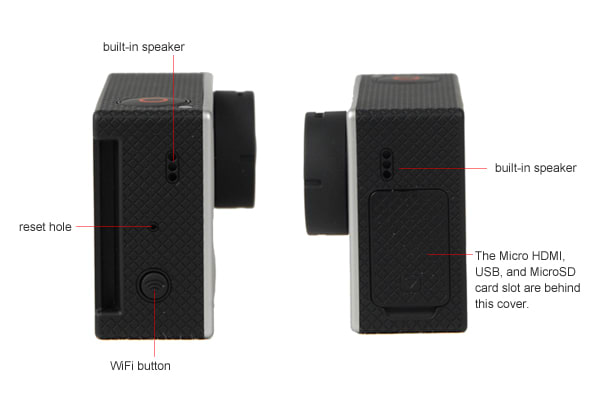
Right
{{section_header}}{{section.name}}{{/section_header}}
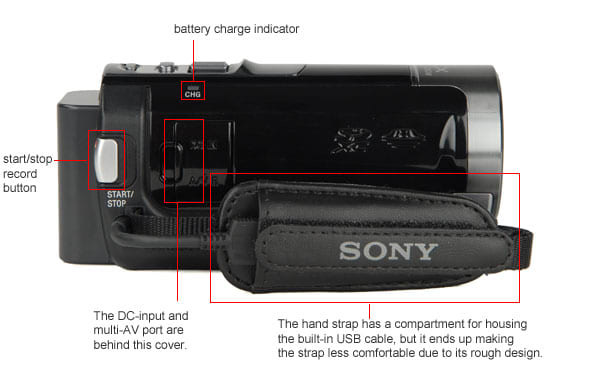
Top
{{section_header}}{{section.name}}{{/section_header}}

Bottom
{{section_header}}{{section.name}}{{/section_header}}

In the Box
{{section_header}}{{section.name}}{{/section_header}}

The Kodak PlayFull Ze1 comes with the following accessories:
• wrist strap
• instruction manual
• micro USB cable
• wall-plug adapter
The camcorder does not come with a mini HDMI cable that can be used to connect the camcorder to an HDTV. A wireless remote control can also be purchased separately.
Color
{{section_header}}{{section.name}}{{/section_header}}
The Kodak PlayFull, like previous Kodak camcorders, had severe problems with our color accuracy test. The camcorder's issues stem from its terrible auto white balance performance, which resulted in an intense, orange glow on the PlayFull's footage from our bright light test. We saw the exact same thing from the PlaySport Zx5 camcorder and we've seen this before on cheap camcorders from other manufacturers as well. Kodak needs to address this issue, as it makes the camcorders nearly unusable under certain lighting conditions. More on how we test color.
In our test, the PlayFull Ze1 managed a color error of 16.76 and a wild saturation level of 167.7%. Neither of these numbers should be used for comparison because they are so far off from the norm—all because of the terribly inaccurate white balance. In Kodak's defense, the camcorder had much better colors under natural light (outdoors) and in our low light test (with LED light). The PlayFull has no manual color controls, but in the camcorder's "effects" menu there is an option to boost saturation levels (high saturation) or to record video in black and white.
The Kodak PlayFull Ze1 had a nearly identical color performance to its brand-mate, the PlaySport Zx5 (both had alarming issues with white balance). The GE DV1 also had white balance issues, but they weren't nearly as severe, and the Sony Bloggie Touch TS10 is one of the few ultracompact models we've seen that actually did a good job in our bright light color accuracy test.
{{comparison_bars title="Color Score Comparison", attribute="Color Score", xLabel="Color Score"}}
Low Light Color
{{section_header}}{{section.name}}{{/section_header}}
Because the PlayFull didn't have as much of a problem with white balance in low light, the camcorder ended up with a much better color accuracy score in this test than it did in our bright light color accuracy test. Again, the PlayFull put up numbers similar to the Kodak PlaySport Zx5—a color error of 5.48 and a saturation level of 85%. These numbers are decent for an ultracompact camcorder, as they rank better than the GE DV1's performance, and very similar to the Sony Bloggie Touch MHS-TS10. More on how we test low light color.
We like the PlayFull's vivid colors in low light, but the camcorder's image did appear rather blurred (particularly in comparison to the Sony Bloggie Touch). Overall, its low light image looked extremely similar to that of the Kodak PlaySport Zx5, which makes sense because the color accuracy and saturation numbers for the two models were in the same range.
Noise
{{section_header}}{{section.name}}{{/section_header}}
Noise levels measured on the PlayFull's test image in bright light came to 0.7%, which is decent for a cheap camcorder. It's roughly the same amount of noise we measured on the Kodak PlaySport Zx5 (0.66%), and it's a bit more noise than was registered by the GE DV1 and the Sony Bloggie Touch. We'd like the noise level on the PlayFull to be a bit lower, but we're satisfied with the camcorder's result—and the PlayFull had nearly the same amount of noise in our low light test, which is another good performance for the camcorder. More on how we test noise.
In the crop image above, the Kodak PlayFull appears to have captured a decently-sharp image (sharper, at least, than the PlaySport Zx5). Unfortunately, the sharpness of the PlayFull's image varied wildly, and, at times, we found certain areas—usually on the left side of the frame—were unfocused and blurred. To get the crop above, we had to frame our test chart slightly askew, otherwise the left side wouldn't look nearly as sharp (appearing more like the Zx5's image). At its best, the PlayFull Ze1 did a good job with sharpness, but, like we said, this sharpness didn't always apply to the entire frame.
{{comparison_bars title="Noise Score Comparison", attribute="Noise Score", xLabel="Noise Score"}}
Low Light Sensitivity
{{section_header}}{{section.name}}{{/section_header}}
Just like the PlaySport Zx5 before it, the Kodak PlayFull Ze1 did a stellar job in our low light sensitivity test. The camcorder needed just 4 lux of light—which is a very low amount—to record an image that would be considered "acceptable for broadcast" (a measurement of 50 IRE on a waveform monitor). More on how we test low light sensitivity.
Many times, we see ultracompact camcorders do better than expensive, high-end models in this test, but that doesn't mean these cheap, little models are better in low light overall. The ultracopmact models benefit from low light modes that we can't turn off. These modes boost low light performance, but they degrade image quality. So, in effect, you get an image that is bright enough, but doesn't look all that great. Either way, compared to the other camcorders in its class, this is a top-notch result for the PlayFull camcorder.
{{comparison_bars title="Low Light Sensitivity Comparison", attribute="Low Light Sensitivity Score", xLabel="Low Light Sensitivity Score"}}
Low Light Noise
{{section_header}}{{section.name}}{{/section_header}}
The PlayFull Ze1 averaged 0.74% noise in our low light test. This is a positive score for the camcorder, and it represents a slightly lower noise level than the PlaySport Zx5. Both the GE DV1 and the Sony Bloggie Touch had better noise scores, but the PlayFull's numbers are still good for an ultracompact model. More on how we test low light noise.
Few ultracompact camcorders are capable of producing great images in low light, so the PlayFull's murky, blurred video in this test wasn't all that surprising. Of the models we compared it to, only the Sony MHS-TS10's video looked better in low light.
{{comparison_bars title="Low Light Noise Score Comparison", attribute="Low Light Noise Score", xLabel="Low Light Noise Score"}}
Low Light Color
{{section_header}}{{section.name}}{{/section_header}}
Because the PlayFull didn't have as much of a problem with white balance in low light, the camcorder ended up with a much better color accuracy score in this test than it did in our bright light color accuracy test. Again, the PlayFull put up numbers similar to the Kodak PlaySport Zx5—a color error of 5.48 and a saturation level of 85%. These numbers are decent for an ultracompact camcorder, as they rank better than the GE DV1's performance, and very similar to the Sony Bloggie Touch MHS-TS10. More on how we test low light color.
We like the PlayFull's vivid colors in low light, but the camcorder's image did appear rather blurred (particularly in comparison to the Sony Bloggie Touch). Overall, its low light image looked extremely similar to that of the Kodak PlaySport Zx5, which makes sense because the color accuracy and saturation numbers for the two models were in the same range.
Motion
{{section_header}}{{section.name}}{{/section_header}}
Motion video didn't look fantastic on our tests with the PlayFull Ze1, but the camcorder was able to produce a decently smooth video image with its 1080/30p record mode. The video had too much artifacting and too much blur for us to give it a free pass, however, and the motion looked particularly bad in our rotating pinwheels. We saw color bleeding, some fuzzy blur where straight lines should appear, and lots of trailing.
In addition to the PlayFull's Full HD record mode, the camcorder also has two 720p record modes (one that uses a 60p frame rate and one that uses a 30p rate). The 720/60p mode produced smoother motion in our test, but its video wasn't as crisp and had more artifacting than the 1080p option. More on how we test motion.
Video Sharpness
{{section_header}}{{section.name}}{{/section_header}}
The Kodak PlayFull didn't do aw well as the Kodak PlaySport Zx5 in our video sharpness tests, but its scores weren't half bad for a camcorder of its class. The PlayFull managed a horizontal sharpness of 675 lw/ph and a vertical sharpness of 650 lw/ph. Both of these scores are a notch below the ZX5's numbers, but they're quite a bit higher than the GE DV1 and the Sony Bloggie Touch MHS-TS10. Frankly, we were surprised to see sharpness scores of this caliber from a camcorder that costs less than a hundred bucks. These scores were obtained using the PlayFull's Full HD 1080p record mode, which is the same mode we used for all of our video tests with the camcorder. More on how we test video sharpness.
{{comparison_bars title="Video Sharpness Score Comparison", attribute="Video Sharpness Score", xLabel="Video Sharpness Score"}}
Stabilization
{{section_header}}{{section.name}}{{/section_header}}
The Kodak PlayFull is equipped with a digital image stabilization system, and Kodak lets you know this by prominently displaying the letters DIS beneath the camcorder's lens. Having a simple digital stabilization system like this has become very common on ultracompact camcorders; Kodak has even included them before on other models. The thing is, this stabilization mode can't be toggled on and off—it's simply always on. Because it is always engaged, we can't test the effectiveness of the system (there's no way to tell how worse the shakiness would be without it). This is the case with most cheap camcorders with a DIS system, although Kodak did allow you to turn the DIS off on some of its previous models. More on how we test stabilization.
Testing Samples
{{section_header}}{{section.name}}{{/section_header}}
Ease of Use
{{section_header}}{{section.name}}{{/section_header}}
In many ways, the Kodak PlayFull Ze1 is the ideal camcorder for beginners. It's tiny, not intimidating, and it's fairly simple to just pick it up and start recording away. The size of the PlayFull does pose a few problems, however. Older people, or anyone who doesn't like to look at tiny screens for that matter, may find the 1.5-inch LCD on the PlayFull troubling. We hated using such a small screen at times, and we'd prefer a larger one even it if means making the camcorder a bit bulkier. We also weren't crazy about the scrunched design of the PlayFull's menu system, which is forced to cut short the text on certain option titles because the LCD isn't large enough to accommodate all the letters.
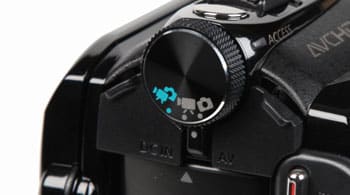
Auto Mode is confusingly called Dual Shot mode
In addition to the hard-to-use menu system, the buttons on the PlayFull aren't the easiest to deal with. The digital zoom goes strangely unlabeled on the camcorder, and it is controlled by pushing up and down on the silver ring that runs around the black start/stop record button. Why didn't Kodak put little labels to signify this is how the digital zoom is controlled? Isn't that one of the features most likely to be used by a novice videographer?
Kodak's provided software with the PlayFull Ze1 is very good compared to what's offered by the competition. We like that the software is compatible on both Macs and PCs, that it comes loaded on the camcorder (no need for an installation disc), and that it is most useful for the basic practice of uploading video to the internet. The share button, which is prominently displayed on the PlayFull camcorder, can be used to tag video clips for upload to a specific site. Pressing the button will not immediately upload your clips to the internet site of your choice. No, you must still connect the PlayFull to a computer to do that.
Auto Mode
{{section_header}}{{section.name}}{{/section_header}}
Like most cheap, ultracompact camcorders, the Kodak PlayFull is devoid of nearly all manual controls and special features. To use the camcorder, you simply point and shoot—and rely on the automatic controls for everything else. Here's the problem: the automatic controls on the PlayFull don't work all that well. The white balance was beyond terrible at times, exposure adjustments weren't smooth by any means, and the LCD on the camcorder is so tiny that it's almost impossible to tell if you're videos are in focus or not while you're recording.
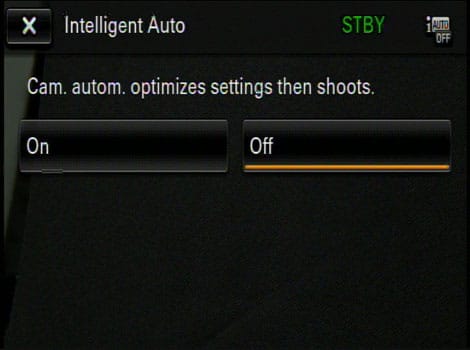
The iAuto mode button is difficult to find, but when you do find it the option for turning on the mode looks like this.
Auto Controls
{{section_header}}{{section.name}}{{/section_header}}
According to Kodak, the PlayFull has a focus range of 1 meter to infinity (roughly 3 feet to infinity), which isn't bad compared to the range offered on other ultracompact models. But you really need to keep this focus limitation in mind when you're using the PlayFull camcorder because the tiny LCD makes it extremely difficult to tell if what your recording is in focus or not. On other camcorders, with larger LCDs, it's possible to just look and see if the image is in focus. This is not something you can do with the Kodak PlayFull.
To see the PlayFull's awful white balance system in action, just take a look at at our color and noise page earlier in this review. The orange glow all over the image captured by the camcorder is a result of the awful white balance system. The faulty auto exposure system is more difficult to show off. We found that when we moved the PlayFull from recording scenes at different light levels, the auto exposure would either change levels abruptly or produce a very juddered step-like change in exposure levels. Either way, it never looked good for the camcorder.
Handling
{{section_header}}{{section.name}}{{/section_header}}
Let's get over the fact that the PlayFull is a tiny, portable camcorder for a moment and let us look at how well this little camcorder actually handles. The shape of the PlayFull Ze1 is interesting, as it is not nearly as wide as most ultracompact camcorders. It's shape is tall and thin, resembling that of a harmonica or one of those audio recording devices people use to make voice memos. The camcorder is easy to hold, but it doesn't fit all that well in the palm due to its tall and thin design. There also isn't a very good area to grip the camcorder other than the by the edges. The front has a series of dots running along half of the side, but this doesn't due much to improve the grip either. Kodak does ship a small wrist strap with the PlayFull, and it's definitely something worth attaching (especially if you're prone to dropping things).

All of the PlayFull's ports are scattered around the sides of the camcorder, and all are covered by flexible doors that must be pried open. And pry is really the right word here, as these port covers can be difficult to get at unless you slip the tip of your fingernail into the small grooves that enable you to pop the doors free. This is not the simplest of exercises, although we'd rather have a cover that is difficult to open than one that doesn't snap shut with a good seal.

The built-in USB arm on the top of the PlayFull may be the camcorder's most awkward design implementation. The arm isn't very flexible, which means it is a challenge to connect it to a USB terminal on a computer. We wish the USB arm extended just a bit more from the camcorder's body in order to make the connection attempt easier. With its current design, your best bet is to use a USB extender cable with the built-in USB arm when connecting it to a computer.

While we do like the compact size of the PlayFull camcorder, we were not impressed by the camcorder's tiny LCD. It's too small to see if your clips are in focus, it's terrible for viewing clips during playback, and its 4:3 aspect ratio is not conducive for the widescreen (16:9) images that the PlayFull camcorder records. We also don't like the embedded buttons on the PlayFull that are represented only by icons—no raised bumps or boxes to let you know where the buttons actually exist. This makes it very easy to press the wrong button. Why couldn't Kodak have made all the buttons on the PlayFull more like the large, well-labeled "share" button near the center of the camcorder?

These dedicated buttons give you quick access to aperture and shutter speed controls.
Portability
{{section_header}}{{section.name}}{{/section_header}}
The Kodak PlayFull is one of the smallest and lightest camcorders we've ever worked with. Coming in at 95g (just under a 1/4 pound), the PlayFull is even lighter than the ultra-tiny Flip MinoHD (which isn't being manufactured anymore, but can still be found online). Yes, the PlayFull is an incredibly small product that is lighter than an iPhone, not much taller than a credit card, and just about 1/2 an inch thick.
The full dimensions for the PlayFull are 40.6 x 99 x 15mm (1.6 x 3.9 x 0.6 inches). There's no removable battery on the camcorder, so its 95g weight spec includes the weight of the internal power source. Basically, this is one of the smallest, lightest, and not to mention cheapest camcorders on the market right now and we can't imagine things getting much smaller anytime soon. Kodak does have a new waterproof PlayFull camcorder with a different shape and design than the regular PlayFull, but it's overall dimensions doesn't make it any more portable (it's a bit shorter, but wider—more like the shape of a credit card).
Battery Life
{{section_header}}{{section.name}}{{/section_header}}
The Kodak PlayFull features an internal battery system that cannot be removed (unless you plan on taking the camcorder apart). This internal battery makes the camcorder easier to use, as it is one less integral piece you need to keep track of, but it also makes the camcorder more difficult to fix or update (if the battery starts showing signs of age, for example). Either way, the camcorder did a decent job in our battery life test. We were able to continually record with the PlayFull for 111 minutes in its highest quality setting with the LCD brightness set to auto. This is 10 minutes less than the PlaySport Zx5 withstood in our test, but it's over twice as long as the abysmal 50-minute battery life achieved by the GE DV1 camcorder.
To charge the battery on the Kodak PlayFull, you may either connect the camcorder to a powered USB port (via its USB arm or the micro USB connector), or you can plug the camcorder into the provided wall-plug adapter that connects via USB. The battery will charge faster if it's plugged directly into an electrical outlet with the adapter, but USB charging may be more convenient for users who have a computer handy. More on how we test battery life.

{{comparison_bars title="Battery Life Comparison", attribute="Battery Life Score", xLabel="minutes"}}
LCD
{{section_header}}{{section.name}}{{/section_header}}
The LCD on the Kodak PlayFull is so small it looks like a joke. And it's not very funny. The screen is only 1.5-inches diagonally, and the portion of the screen that can be used to frame your video is even smaller than that. Two black bars run across the top and bottom of the LCD to give it a widescreen (16:9) aspect ratio, which also cuts the viewing area of the screen by a significant portion. To top it off, the screen has a meager 70,200-pixel resolution. Say what you will about the PlayFull Ze1's portability, but a 1.5-inch screen is just too damn small. It makes framing your video extremely difficult, it makes navigating menus more of a chore, and it makes it nearly impossible to tell if your video is in focus or not. Kodak likes to tout the fact that the LCD has four brightness control options (high, medium, low, and auto) and a glare shield feature—but don't be fooled. This is a screen that is not worthy of any kind of praise.
Stabilization
{{section_header}}{{section.name}}{{/section_header}}
The Kodak PlayFull is equipped with a digital image stabilization system, and Kodak lets you know this by prominently displaying the letters DIS beneath the camcorder's lens. Having a simple digital stabilization system like this has become very common on ultracompact camcorders; Kodak has even included them before on other models. The thing is, this stabilization mode can't be toggled on and off—it's simply always on. Because it is always engaged, we can't test the effectiveness of the system (there's no way to tell how worse the shakiness would be without it). This is the case with most cheap camcorders with a DIS system, although Kodak did allow you to turn the DIS off on some of its previous models. More on how we test stabilization.
Manual Focus
{{section_header}}{{section.name}}{{/section_header}}
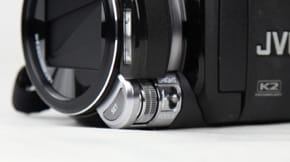
The adjustment dial makes accurate focus adjustments easy.
Manual Exposure
{{section_header}}{{section.name}}{{/section_header}}
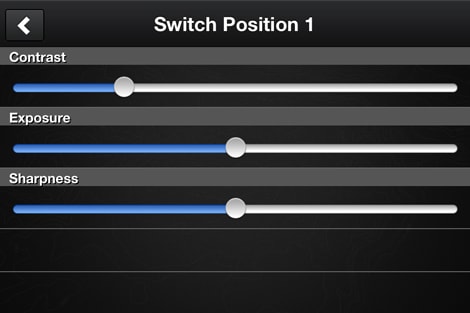
The manual exposure controls are only found on the Contour app, not on the camcorder itself.
Auto Controls
{{section_header}}{{section.name}}{{/section_header}}
According to Kodak, the PlayFull has a focus range of 1 meter to infinity (roughly 3 feet to infinity), which isn't bad compared to the range offered on other ultracompact models. But you really need to keep this focus limitation in mind when you're using the PlayFull camcorder because the tiny LCD makes it extremely difficult to tell if what your recording is in focus or not. On other camcorders, with larger LCDs, it's possible to just look and see if the image is in focus. This is not something you can do with the Kodak PlayFull.
To see the PlayFull's awful white balance system in action, just take a look at at our color and noise page earlier in this review. The orange glow all over the image captured by the camcorder is a result of the awful white balance system. The faulty auto exposure system is more difficult to show off. We found that when we moved the PlayFull from recording scenes at different light levels, the auto exposure would either change levels abruptly or produce a very juddered step-like change in exposure levels. Either way, it never looked good for the camcorder.
Audio Controls
{{section_header}}{{section.name}}{{/section_header}}
Look closely at the front of the PlayFull Ze1 and you'll notice a tiny black dot to the left of the lens area. Yup, that's the camcorder's built-in microphone. The mic isn't very good (it records mono audio only), and its placement is definitely a bit awkward, which is why we're very surprised to see a audio level adjustment option for this itty-bitty built-in microphone. Going into the camcorder's main menu, you'll find the option for adjusting the microphone levels. There's about 11 increments of adjustment and an audio level display appears on the top of the screen while you adjust the levels. Kodak offers this feature on other models as well, but we didn't expect to see it on the PlayFull.
In addition to the mono mic, the PlayFull also has a mono speaker that plays audio during playback of video clips. The speaker is located on the bottom of the camcorder, next to the tripod mount.
Editing
{{section_header}}{{section.name}}{{/section_header}}
One of the fanciest and most prominent buttons on the back of the PlayFull is the camcorder's share button. This button is integral to the PlayFull's built-in editing software that allows you to easily upload your video clips or photos to the web. The button works in conjunction with Kodak's "Share Button App" that is loaded on the camcorder itself and can be installed when you connect the PlayFull to a computer. The software works on both PCs and Macs and allows for uploading content to a variety of different websites like Facebook, YouTube, etc. The system isn't perfect, but the step-by-step manner in which the software unfolds is very good for beginners. Overall, the "Share Button App" is one of the best provided applications we've seen on a cheap, ultracompact model like the PlayFull. For an overview of the software that ships with this and other camcorders, see our article: Video Editing Software For Your Camcorder{{product.brand.name}}-Included-Software.htm.
Compression
{{section_header}}{{section.name}}{{/section_header}}
The Kodak PlayFull Ze1 is an HD camcorder that can record high definition video at a 1920 x 1080 resolution or 1280 x 720 resolution. The camcorder also has options for recording standard definition video at an 848 x 480 resolution (called WVGA). The camcorder uses the MPEG-4 codec for compressing its HD video, which is the standard compression system on cheap, ultracompact camcorders. Check out the table below for more information about the PlayFull's record modes. Read more about the advantages and disadvantages of various high definition compression types.
Media
{{section_header}}{{section.name}}{{/section_header}}
The main method for storing your videos and photos on the PlayFull camcorder is with SD or SDHC memory cards. The cards fit into the slot on the left side of the camcorder (next to the HDMI port), and once a card is inserted you are ready to go. There is a tiny amount of internal memory on the camcorder, but only 128 MB—about enough to store a few photos or a few seconds of video (not much at all). Don't rely on this miniscule amount of internal memory; go out and buy a memory card to work with the PlayFull instead. Read more about the advantages and disadvantages of various media types.

Slow Motion Modes
Still Features
{{section_header}}{{section.name}}{{/section_header}}
The Kodak PlayFull has a basic still image mode that you access by pressing the video/photo button on the back of the camcorder. A second press of this button brings you back to video mode, so you have to look at the little icon on the upper right corner of the LCD to see what shooting mode you're in. In photo mode you can't record any videos, but a press of the start/stop record button will snap a 5.3-megapixel still photo instead. There are no other photo options on the camcorder, so all photos will be 5.3 megapixels (at a 3072 x 1728 resolution).
Lens & Imaging System
{{section_header}}{{section.name}}{{/section_header}}

The Kodak PlayFull Ze1—like most camcorders in its class—has a fixed lens. This means the lens has no moving parts: no optical zoom, a fixed aperture, and a fixed focal length. Kodak lists the focus range for the camcorder as 1m - infinity, but the tiny LCD on the back of the PlayFull makes it difficult to tell whether your images are in focus during recording. Your best bet is to stand back and avoid recording anything too close (at least 3 feet away). The sensor on the PlayFull is a 1/3.2-inch CMOS with 5 megapixels. This sensor is similar in size to the CMOS chips found on other ultracompact camcorders.
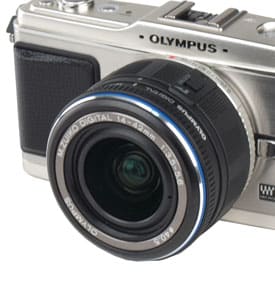
LCD
{{section_header}}{{section.name}}{{/section_header}}
The LCD on the Kodak PlayFull is so small it looks like a joke. And it's not very funny. The screen is only 1.5-inches diagonally, and the portion of the screen that can be used to frame your video is even smaller than that. Two black bars run across the top and bottom of the LCD to give it a widescreen (16:9) aspect ratio, which also cuts the viewing area of the screen by a significant portion. To top it off, the screen has a meager 70,200-pixel resolution. Say what you will about the PlayFull Ze1's portability, but a 1.5-inch screen is just too damn small. It makes framing your video extremely difficult, it makes navigating menus more of a chore, and it makes it nearly impossible to tell if your video is in focus or not. Kodak likes to tout the fact that the LCD has four brightness control options (high, medium, low, and auto) and a glare shield feature—but don't be fooled. This is a screen that is not worthy of any kind of praise.
Connectivity
{{section_header}}{{section.name}}{{/section_header}}
The PlayFull may be a tiny camcorder, but Kodak managed to pack in quite a few surprising connectivity options all over the camcorder's body. Some of the ports and terminals are camouflaged well, so they may be hard to spot at first, but if you look closely around the edges of the PlayFull you'll see little writing and icons indicating the presence of ports underneath removable covers.
Starting on the top of the PlayFull Ze1, you'll find the built-in USB arm that releases when you slide back the ribbed plastic area on the top of the camcorder. The USB arm doesn't "flip" or "shoot" out like it does on other camcorders. It kind of just appears, and you have to tug on it to really get it out of its shell. The arm is tethered awkwardly to the camcorder and there isn't much room to maneuver it. You can expect it to be a challenge to plug this USB arm into a port on a computer (unless you use an extender cable or have a very flexible USB terminal).
So, say you don't want to deal with the strange USB arm on the top of the camcorder. Is there any other way to connect the PlayFull to a computer? Actually, there is. Turning the PlayFull onto its right side, you'll find a small micro USB port that also happens to double as an AV-output. Fitting into this port is the provided micro USB cable that ships with the camcorder, which, in turn, fits into the USB-wall-plug adapter that can be used for charging the PlayFull. Theoretically, you can also connect the PlayFull to a computer this way. We say "theoretically" because, while we did find you can charge the camcorder in this manner, we were never able to get a computer to recognize the PlayFull when we connected it via the micro USB port. The memory card inserted in the camcorder wouldn't be recognized either. Only when we used the built-in USB arm did our computers establish a connection with the PlayFull. Very strange and very annoying, as this means the micro USB port is essentially a power input and nothing else.
Ah, but the PlayFull has one other trick up its sleeve: the micro USB port can also function as an AV-output, but the camcorder does not come with such a cable (it must be purchased separately). Additionally, we should note the tiny reset button located next to this micro USB port, which is something that is very easy to miss.
The final connectivity option is located on the left side of the PlayFull camcorder. Here you'll find the micro HDMI connector, which will allow you to connect the camcorder to an HDTV so you can play back content recorded with the camcorder. We're happy to see some kind of HDMI connection on the PlayFull, but most camcorders tend to use the mini HDMI connector instead of micro HDMI these days (micro HDMI is more common on digital cameras). Either way, the PlayFull does not ship with any kind of HDMI cable, so you'll have to purchase one separately if you want to connect the PlayFull to an HDTV.
Next to the HDMI terminal is the camcorder's SD/SDHC memory card slot, which has the standard "spring loading" system of inserting and ejecting memory cards (insert the card until it clicks in, and to eject just push down on the card and it will release with a spring).
Media
{{section_header}}{{section.name}}{{/section_header}}
The main method for storing your videos and photos on the PlayFull camcorder is with SD or SDHC memory cards. The cards fit into the slot on the left side of the camcorder (next to the HDMI port), and once a card is inserted you are ready to go. There is a tiny amount of internal memory on the camcorder, but only 128 MB—about enough to store a few photos or a few seconds of video (not much at all). Don't rely on this miniscule amount of internal memory; go out and buy a memory card to work with the PlayFull instead. Read more about the advantages and disadvantages of various media types.

Still Features
{{section_header}}{{section.name}}{{/section_header}}
The Kodak PlayFull has a basic still image mode that you access by pressing the video/photo button on the back of the camcorder. A second press of this button brings you back to video mode, so you have to look at the little icon on the upper right corner of the LCD to see what shooting mode you're in. In photo mode you can't record any videos, but a press of the start/stop record button will snap a 5.3-megapixel still photo instead. There are no other photo options on the camcorder, so all photos will be 5.3 megapixels (at a 3072 x 1728 resolution).
Other Features
{{section_header}}{{section.name}}{{/section_header}}
Effects
In lieu of manual controls, Kodak equipped the PlayFull camcorder with a set of four digital effects. The options include: High Saturation, '70s Film, Black & White, and Sepia. None of these effects are all that impressive, as each of them could easily be applied in post production with a basic editing program (like Apple's iMovie).
NTSC/PAL output
If you're traveling overseas to a country that uses the PAL video signal instead of NTSC (which is what we use in the US), you may want to try out the PlayFull's handy option of switching between the two. Switching to PAL won't change anything about the way the PlayFull records video, but it will change the way the video is output to a television. So, if you're hooking up the camcorder to a PAL TV and the image looks funny, try changing the output signal to see if it helps.
GE DV1 Comparison
Kodak has made quite the name for itself in the ultracompact camcorder market, as we've long been fans of the company's PlaySport camcorders. The PlaySport Zx5, which we reviewed earlier this year, is quite a bit different than the PlayFull Ze1, as it features a larger design and waterproof capability. Based on video performance, the two models didn't rate much differently in our testing—although we did find the PlaySport's automatic controls to work a bit better.
The real difference with these camcorders is design. The Zx5 is larger, sturdier, and has a bigger LCD than the PlayFull Ze1. Even though its a bulkier camcorder, we like the design of the PlaySport a whole lot more. The increased size of the LCD makes the camcorder easier to use, the buttons feel better to push, and the shape of the PlaySport is much easier to grip. Yes, the PlayFull is a bit more portable, but how much difference does a few millimeters here and there really make? Both camcorders will fit in your pocket with ease.
Of course, we also like the PlaySport Zx5 because of its waterproof capability. It is our opinion that if you're planning on getting a cheap, ultracompact camcorder, you might as well get a waterproof one. These camcorders tend to be abused, tossed into the bottom of a bag, or brought to the beach repeatedly. Trust us, they'll last much longer if they have a rugged, waterproof design. Kodak must agree with this sentiment as well. The company announced a few weeks ago a new PlayFull camcorder—the Ze2—that has a similar compact body to the original PlayFull, but features a waterproof design.
Sony Bloggie Touch MHS-TS10 Comparison
If you're looking for a cheap camcorder, the GE DV1 is certainly a model that fits the bill. The camcorder launched with a $129 MSRP—the same as the Kodak PlayFull Ze1—but it is currently available online for less than $100 bucks (Amazon.com is selling new models for $89). Like many ultracompact camcorders, the GE DV1 is waterproof, but we found the overall design of the camcorder to be less than compelling.
In our performance tests the GE DV1 did a bit worse than the Kodak PlayFull overall (particularly in low light). We were also particularly disappointed with the DV1's abysmal battery life that allowed the camcorder to record for just 50 minutes in our test (compared to 111 minutes for the Kodak PlayFull).
Let's face it, the GE DV1 is a cheap camcorder and you get what you pay for. The waterproof design is cool, but the camcorder is ultimately frustrating to use and is loaded with flaws. That being said, the Kodak PlayFull has its setbacks as well. It is similarly frustrating to work with and its tiny LCD makes framing your recordings a challenge. Neither of these camcorders will make a huge dent in your wallet, but we'd recommend skipping out on each of these models and upgrading to something better (like the Kodak PlaySport or the Sony Bloggie Touch) for just a bit more cash.
COMP 3
The Sony Bloggie Touch MHS-TS10 is not a brand new camcorder, and since its launch in 2010 Sony has released a number of new Bloggie camcorders. The MHS-TS10 may not be the company's best "Bloggie" anymore, but it's still a very good ultracompact camcorder. The design is stylish and compact, looking more like a fancy cell phone than a silly toy—which is the way we'd describe a number of the other ultracompact camcorders on the market.
The Bloggie Touch also features a large touchscreen LCD that is essentially the antithesis of the screen on the PlayFull camcorder. You won't have to squint and strain your eyes to see if your video is in focus on the Bloggie Touch, as its 3-inch screen is more than adequate for viewing your videos and framing your shots. The Sony also did better than the Kodak PlayFull in our performance tests, with the Bloggie Touch being particularly good in our color accuracy tests (thanks to a solid automatic white balance feature).
The PlayFull and the Bloggie Touch are sure to attract two distinctly different audiences. If you want a very simple camcorder that looks and feels like a toy (a great model for kids), then the Kodak PlayFull is the right choice. The Sony Bloggie Touch is the more sophisticated model, but it is also more expensive and not quite as easy to use. We also urge you to check out Sony's other Bloggie models, including the 3D-capable Sony Bloggie MHS-FS3.
Conclusion
For the past few years, Kodak has excelled at making reliable, compact camcorders that are both cheap and easy to use. The PlayFull Ze1 certainly has all those traits, and, continuing in true Kodak fashion, the camcorder avoids many of the useless gimmicks that plague other ultracompact models. There is one gimmick the PlayFull succumbed to, however, and that's the idea of making a camcorder that is so tiny that it actually becomes a nuisance to work with. The PlayFull Ze1 is just a tad too small for our taste, and this, combined with its poor auto white balance system, dampened our overall impression of the camcorder.
The PlayFull launched earlier this year with a $129 price tag, but the camcorder can be found online now for as little as $70 bucks, which makes the Ze1 one of the best bargains we've seen in a while (even compared to other budget cams). This makes it the ideal camcorder for a young child or someone who is weary about handling an expensive piece of equipment just to record videos. The quality of the Full HD video captured by the PlayFull Ze1 is certainly not fantastic, but it's definitely better than what we expected to see from such a cheap model. Besides, if you're spending $70 bucks for a camcorder, you shouldn't expect your clips to look picture-perfect.
Instead of skimping on video performance, Kodak cut corners on the PlayFull by incorporating a tiny LCD (1.5 inches) and using a cheap overall design. Unlike its brand-mate, the Kodak PlaySport, the PlayFull Ze1 is easily scratchable, has some terrible buttons, and would be unable to survive a drop from any significant height. These design flaws can make for a frustrating user experience at times, but, again, these are all things that we expected to see from a budget camcorder.
The PlayFull Ze1 is not waterproof, and consumers must be careful not to confuse it with Kodak's new waterproof PlayFull Ze2 camcorder. The Ze2 is very different than the Ze1: it tops out with a 720p record mode and has an altered shape and design (not to mention the waterproof capability).
Photo Gallery
{{photo_gallery "Front Photo", "Left Photo", "Left Open Photo", "Back Photo", "Right Photo", "Top Photo", "Bottom Photo", "Lens Photo", "Lens Photo 2", "3D Lens Photo", "Media Photo", "Easy Mode Photo", "Manual Controls Photo", "Zoom Photo", "Zoom Photo 2", "Ease of Use Photo", "Battery Photo", "LCD Photo 1", "LCD Photo 2", "EVF Photo 1", "EVF Photo 2", "Mic Photo", "Mic Photo 2", "Ports Photo 1", "Ports Photo 2", "Ports Photo 3", "Ports Photo 4", "Ports Photo 5", "Ports Photo 6", "Handling Photo 1", "Handling Photo 2", "Handling Photo 3", "Handling Photo 4", "Box Photo"}}
Meet the tester
Jeremy is the video expert of our imaging team and Reviewed.com's head of video production. Originally from Pennsylvania and upstate NY, he graduated from Bard college with a degree in film and electronic media. He has been living and working in New England since 2005.
Checking our work.
Our team is here to help you buy the best stuff and love what you own. Our writers, editors, and experts obsess over the products we cover to make sure you're confident and satisfied. Have a different opinion about something we recommend? Email us and we'll compare notes.
Shoot us an email